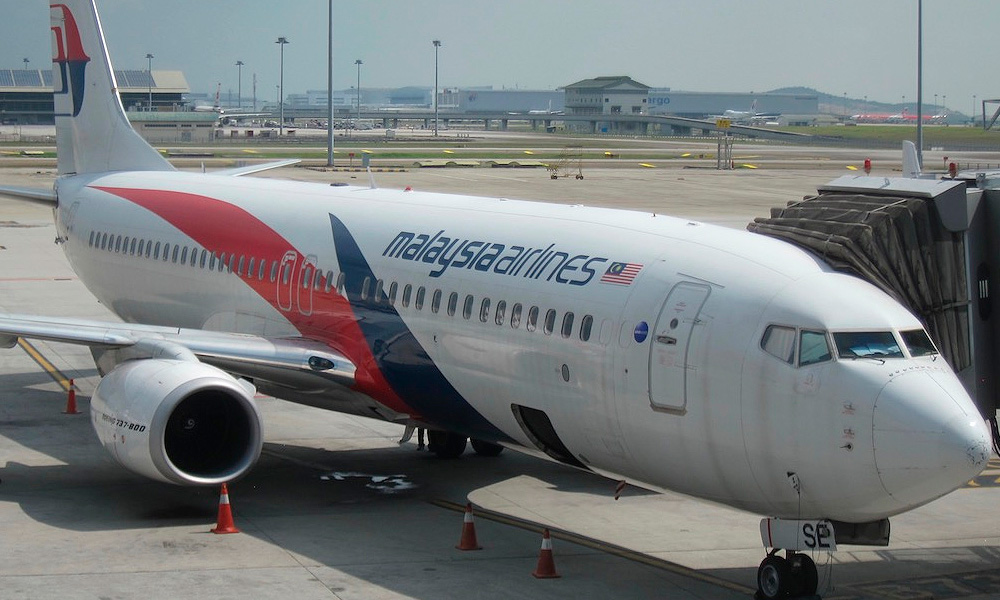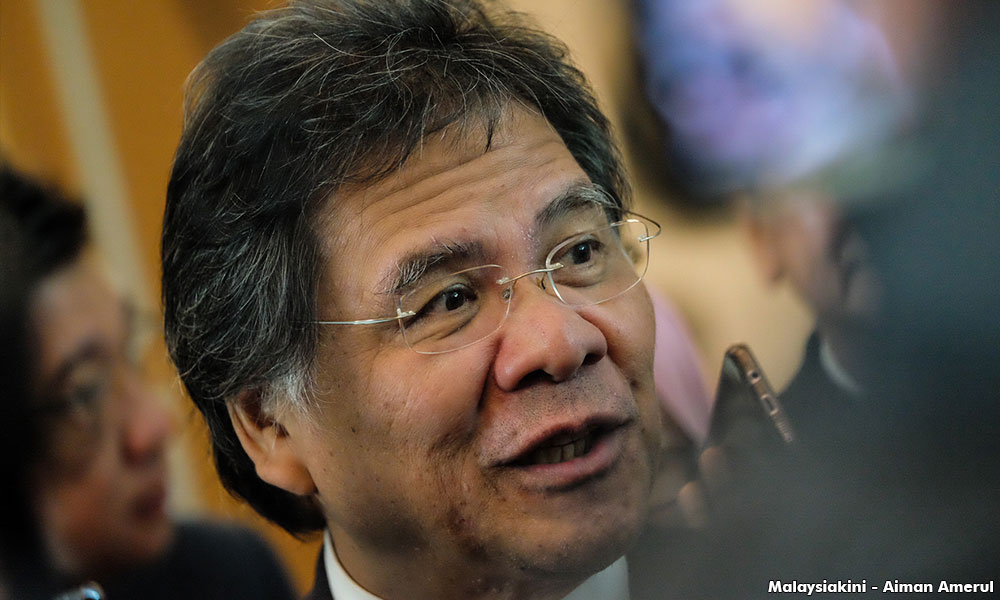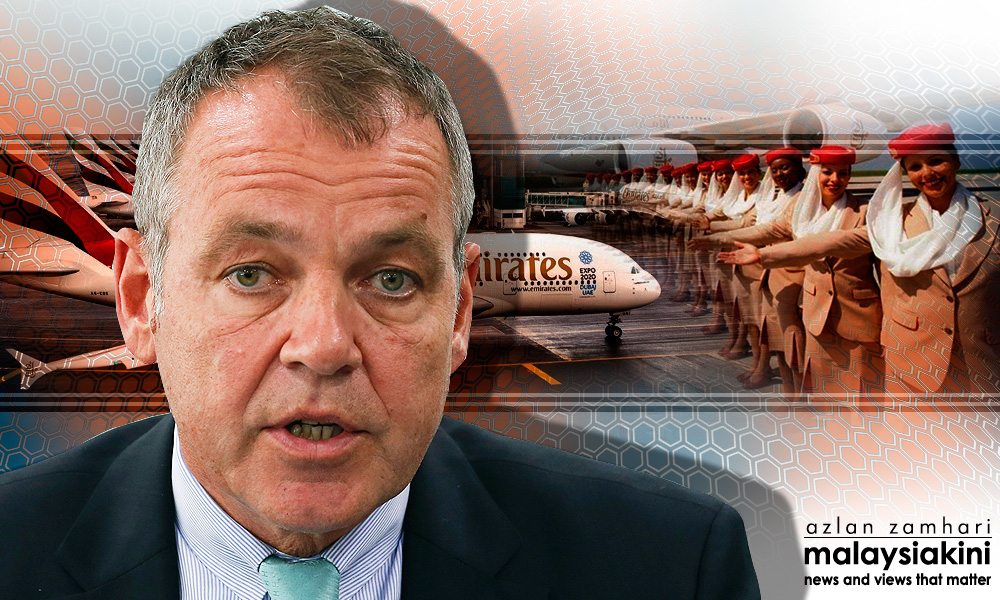
How do you solve a problem like Maria?
How do you catch a cloud and pin it down?
How do you find a word that means Maria?
A flibbertigibbet!
A will-o'-the wisp!
A clown!
Many a thing you know you'd like to tell her,
Many a thing she ought to understand.
But how do you make her stay,
And listen to all you say?
How do you keep a wave upon the sand?
Oh, how do you solve a problem like Maria?
From the song 'Maria', in the movie 'The Sound of Music'
QUESTION TIME | In some ways, Malaysia Airlines, like Maria in the movie "The Sound of Music", is a problematic, orphaned child that is being moved around from place to place to find her a home which will accept her and ensure that she develops and finds her place in life.
It’s about capitalising on the inherent strength of the airline, developing a niche, building upon it and, most importantly, getting the right fare for the blend of services provided.
But since the early Nineties, except for one, most CEOs simply failed to appreciate this delicate mix required for success, succumbing instead to trite ways, such as focusing on cost-cutting and shrinking the airline instead of sustainably growing it.
The orphan child was simply not allowed to bloom and actualise its full potential under different parents and guardians who were supposed to give direction, support and succour. Not surprisingly, it wilted, leading some to consider closing the airline down altogether.
Lately, there have been signs that the child may well be in the nascent stages of recovery, because of a move back to what distinguished it from other airlines - its high level of service and reliability, yes reliability.
Don’t forget that Malaysia Airlines was among the 5-star airlines in Skytrax’s ranking of world airlines for many years, topping areas such as cabin service for economy class.
Now, it seems, the problem child may be in the early stages of blooming again and seems to be attracting a lot of attention of late. There suddenly seems to be a plethora of offers to adopt the orphan. It is a time to be cautious to ensure the right parent takes over.
For Malaysia Airlines, finding a suitable home has been going around from the early Nineties, during Prime Minister Dr Mahathir Mohamd’s first run from 1981 to 2003. In 1994, Tajudin Ramli, known to be a close associate of former finance minister Daim Zainuddin, took an RM1.8 billion loan to buy a 32 percent stake in Malaysia Airlines.
Seven years later, in 2001, after Tajudin had nosedived the airline into the ground, the government bought the stake back for the same price, causing furore at the time because the market price was very much lower, valuing the stake at under half the original value. It was nothing but a bailout.

Since then, there have been a series of profits and losses. After a particularly heavy loss of RM1.3 billion in 2005, Sarawakian Idris Jala (photo, above), a turnaround man from Shell, took over as CEO, and in 2007, the airline reported a profit of RM853 million. His main thrusts were two - cutting costs, and revenue and route management.
Idris recognised that revenue management was the key to Malaysia Airlines’ turnaround. Basically, this involved a complicated managing of seats available, together with kilometres flown, to provide the best mix of pricing to use available capacity, and thereby optimise revenue. The key was the right mix of fares and loads. This was done for each route and if a route could not be turned around within a certain period, it was closed down.
The Malaysian managers who succeeded Idris did not recognise this enough. Fares for the same destinations must be higher than those for low-cost carriers because full-service carriers have much higher costs, give as much as 25kg of baggage allowance and free meals and drinks. But often Malaysia Airlines charged lower - the misguided view that the low-cost market was their competitor.
Even as their capacity utilisation increased, the revenue overall suffered because the amount of money received for each kilometre flown dipped.
By 2015, the focus for a turnaround, under a plan by its major shareholder Khazanah Nasional, was cost-cutting and route rationalisation (read cutting routes).

Khazanah took Malaysia Airlines private and initiated an RM6 billion plan, bringing in a foreign CEO, Christoph Mueller (photo, above), to run the airline in 2015.
Mueller basically cut costs, but did very little to increase revenue, if at all, shrinking the airline and making it regional. He introduced a code-sharing agreement with Emirates, giving up even part of the regional routes to Emirates, which he joined after a premature departure from Malaysia Airlines barely a year into his appointment.
His successor, Peter Bellew, also departed barely a year into his job, citing “national service” to Irish carrier Ryanair in 2017, from which he had come earlier.
Both the foreign CEOs looked like they used Malaysia Airlines as a stepping stone to further their own careers. They did not even seem to have provisions in their contracts to prevent them from leaving for other carriers and to have a decent period of time before they assumed jobs within the industry.

Malaysia Airlines’ homebred Captain Izham Ismail (above, left) took over as CEO after that, but his background is more that of an operations man rather than a person who knew and understood well revenue management - the heart to the success of any airline.
Under him, some progress has been made, which may explain some of the interest that other investors have in Malaysia Airlines.
Malaysia Airlines has gone through the full gamut of panaceas, such as government ownership and then private ownership and then back to government ownership, local CEOs and foreign CEOs, cost-cutting, subsidies, etc. Now investors are interested in taking over. Why?
Perhaps because it is progressing again. Under Captain Izham, who took over on Dec 1, 2017, Malaysia Airlines has been rated the Best Airline in Asia at the Patwa International Travel Awards at ITB Berlin in March.
The Patwa (Pacific Area Travel Writers Association) awards recognise individuals and organisations that have excelled in promoting tourism across aviation, hotels, travel agencies, tour operators, destinations, government bodies and tourism ministries.
In the Skytrax World Airline Awards for 2019, it was voted the most improved airline in Asia, and the third most improved in the world. If Malaysia Airlines keeps at it, it can again be among the top airlines in the world. It was right up there before, with the best anywhere.
Right now, it is examing strategic alliances with Japan Airlines and SIA, two of the top airlines in Asia and the world.
Everyone seems interested in making a presentation to Mahathir about how they can turn around Malaysia Airlines. Such proposals, however, need to be vetted by experts in the field and by Malaysia Airlines management.
Otherwise, the government may end up parting with Malaysia Airlines for too little money or, like the last time, putting the national airline into the hands of someone like Tajudin who had no experience in running an airline, and who eventually lost both his airline and telecommunications businesses.
There are many people who claim to be able to do things out there, many of them without any experience in the areas they want to go into. To entrust the airline to such people could be disastrous, especially since the government may have to step back in to rescue the airline.
As a strategic national airline, it would be better to keep the airline in government hands, but free up the management so that there is competence, honesty and pride that they are working for something greater than themselves.
It can be done. Look at SIA, Singapore government-owned, but for decades, since parting ways with Malaysia-Singapore Airlines in 1972, in the list of the best and most profitable airlines in the world.
P GUNASEGARAM has long been an admirer of Malaysia Airlines' service, although it has deteriorated in recent times. Thankfully, it seems to be recovering some in even more recent times. E-mail: t.p.guna@gmail.com.



No comments:
Post a Comment
Note: Only a member of this blog may post a comment.